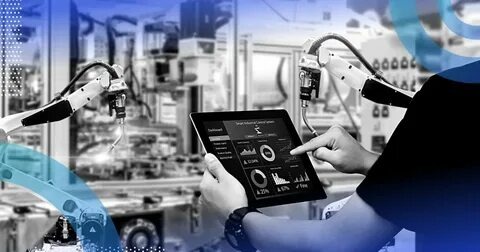It is Stapery Technology isn’t well-known, it’s the unsung hero that powers a lot of the everyday items we use.In fact Stapery Technology plays a critical role in guaranteeing that production processes are efficient, goods are durable, and logistics are seamless—from the garments we wear to the parcels we receive. However, what is stapery technology exactly, and why is it so important in today’s sectors of the economy?
Origins and Early Developments
Though it wasn’t given this name back then, the idea of stapery technology dates back to the industrial revolution. It started out with simple instruments and methods for stabilizing or fastening materials at different production stages.In fact Technology advanced along with industries, adopting increasingly sophisticated instruments and techniques.

Evolution Over the Decades
Significant progress has been made in stapery technology over time, particularly with the introduction of digitalization. Technology has advanced to the point that enterprises may now expand processes and increase even so precision,and from mechanical tools to automated systems.
Key Components of Stapery Technology
The instruments and gadgets that enable Stapery Technology are its fundamental components. These include fastening machines, staplers, and other mechanical equipment used for material security.After These tools are frequently automated in contemporary applications, enabling quicker and more precise procedures.
Software and Digital Integration
Nowadays, stapery technology is more than simply physical tools in the digital age. Software is essential to the planning, carrying out, and overseeing of stapery procedures. Digital integration has completely changed the industry, from CAD tools that create fastening patterns to IoT devices that monitor performance.
Applications of Stapery Technology
One of the main industries where Stapery Technology excels is manufacturing. Technology guarantees that parts are firmly connected throughout the assembly of electrical devices and automobiles, improving the end product’s durability and dependability.
Role in the Textile Industry of Stapery Technology
Stapery Technology is utilized in the textile industry to produce long-lasting, aesthetically beautiful materials. Manufacturers may create fabrics that resist abrasion by incorporating cutting-edge attaching processes, extending the life of apparel and other fabric-based items.
Utilization in Packaging and Logistics
In fact Additional domains where Stapery Technology is crucial are packaging and shipping. Technology is essential to the supply chain because it can secure parcels and guarantee that goods reach their destination safely. Nowadays, automated equipment for stapling and fastening are widely used in warehouses, as they expedite procedures and lower the possibility of human error.
Innovations in Stapery Technology
Recent Advancements
Stapery Technology has seen a rapid upsurge in developments in recent years.More ever Automation has changed everything by enabling industry to produce more goods at higher output levels without sacrificing quality. Another noteworthy development is the arrival of smart stapling machines, which can modify settings according to the kind of material.
The Role of Automation
In Stapery Technology, automation is about accuracy and consistency as much as speed. Automated systems have the ability to carry out monotonous activities with little deviation, guaranteeing that all products satisfy the same exacting criteria. This is especially crucial for sectors of the economy where even the tiniest mistake can have serious consequences.
Impact of Artificial Intelligence
The field of artificial intelligence (AI) is starting to influence stapery technology as well. Artificial intelligence (AI)-powered solutions are able to evaluate data instantly and adapt to enhance the stapling procedure. Better products are eventually produced as a result of increased efficiency and less waste.
Benefits of Implementing Stapery Technology
Increased Efficiency and Productivity
The increase in productivity and efficiency that Stapery Technology provides is one of its biggest advantages. Automated systems have the ability to operate continuously, generating greater output in less time than manual procedures. Higher output and cheaper operating costs result from this.
Cost Savings and Resource Management
Stapery Technology lowers expenses as well. Businesses can save money on raw materials and steer clear of expensive rework by cutting down on material waste and errors. Automated systems also require less human intervention, which reduces labor expenses.
Enhanced Precision and Quality Control
In many industries, precision is essential, and Stapery Technology provides it. Automated methods guarantee that every fastening procedure is carri out precisely, minimizing the possibility of errors and guaranteeing that the goods fulfill rigorous quality requirements.
Challenges in Stapery Technology
Integration with Existing Systems
Although Stapery Technology has several advantages, integrating it with current systems can be difficult. For a seamless transition, businesses frequently need to make large upfront investments in new infrastructure and training.
High Initial Costs of Stapery Technology
Stapery Technology can have a high upfront cost, particularly for small and medium-sized enterprises. Nonetheless, the cost is frequently justified by the long-term savings and increased efficiency.
Skill Gap and Training Needs of Stapery Technology
Sophisticated stapery technology has made trained operators necessary.In addition To make sure that their employees are able to utilize the new technology efficiently, businesses need to invest in training programs, which may be an expensive and time-consuming procedure.
Case Studies of Stapery Technology
Successful Implementation in the Automotive Industry
The use of Stapery Technology has been pioneer by the automotive sector. Vehicles that are safer and more efficient have been produc by manufacturers through the integration of improved fastening systems. One such example is the assembling of automobile interiors, where automated stapling has drastically lowered manufacturing times and expenses.
Breakthroughs in Textile Manufacturing
Stapery Technology has made it possible to produce high-performance fabrics in the textile industry. In order to produce fabrics that are more resilient to environmental changes and long-lasting, businesses have implemented automated stapling systems, which has resulted in happier customers and longer-lasting products.
The Future of Stapery Technology
Predictions and Trends
More ever As automation, artificial intelligence, and digital integration continue to progress, the future of stapery technology is bright. More intelligent stapling systems with self-diagnosis and repair capabilities are expected to emerge, experts say, resulting in even less downtime and increas productivity.
Potential Impact on Global Industries
Stapery Technology’s influence on international industries will only increase as it develops further. Technology will be a major factor in determining how manufacturing, textiles, packaging, and other industries develop in the future,move ever from lowering production costs to raising product quality.
Environmental Impact of Stapery Technology
Sustainability and Eco-Friendly Practices
Stapery Technology is also helping other businesses adopt more environmentally friendly methods. Through material waste reduction and resource optimization, the technology assists businesses in minimizing their environmental impact. More environmentally friendly production techniques are being made possible by advancements in eco-friendly fastening materials.
Reducing Waste through Stapery Technology
One of the main advantages of stapery technology is waste minimization. The efficient utilization of materials by automated systems minimizes waste and eliminates the need for surplus inventories. In addition to saving money, this advances sustainability objectives.
Stapery Technology in the Global Market
Leading Companies and Innovators
more ever Leading the way in Stapery Technology innovation are a few companies. Moreever These include multinational behemoths in technology and industry that are pushing the envelope by combining AI and creating state-of-the-art stapling systems.
Market Trends and Economic Impact
The growing need for efficiency and automation is propelling the Stapery Technology market’s rapid global expansion. We may anticipate major economic effects from the widespread adoption of this technology, such as the creation of jobs in the tech sector and heightened competition for businesses willing to adapt.
Training and Education in Stapery Technology
Educational Programs and Courses
Specialized education is becoming more and more necessary in Stapery Technology as the demand for qualified personnel increases. In order to prepare the next generation of workers for this rapidly changing field, numerous universities are now offering courses and certification programs centered on the newest stapling techniques and technologies.
Certification and Professional Development
The importance of Stapery Technology certification is rising for people who want to progress in their jobs. A thorough understanding of the technology and its applications is demonstrat by these credentials,However which increases an applicant’s appeal to employers across a range of industries.
Comparing Stapery Technology with Traditional Methods
Advantages over Conventional Techniques
Compared to conventional fastening techniques, staple technology has a number of benefits, including greater efficiency, speed, and precision. Automated systems perform better than human methods in nearly every way, from lowering labor expenses to raising product quality.
Limitations and Considerations
Stapery Technology has drawbacks in spite of all of its advantages. Adoption may be hamper, especially by high upfront expenditures and the requirement for specialist training, especially in smaller businesses. Furthermore, not all applications will benefit from the technology, so great thought must be given before making the switch.
Consumer Perspective in Stapery Technology
How Stapery Technology Affects Everyday Products
Even though they might not be aware of it, customers use stapery technology on a daily basis. From apparel to electronics to packaged goods, the technology makes sure that the products they utilize are dependable, long-lasting, and of the highest caliber.

Public Perception and Acceptance
The general public’s opinion of stapery technology is favorable, particularly as more people become aware of its contribution to the creation of high-quality products. Still, there is a need for increased knowledge and instruction regarding the advantages of this technology.
Conclusion
Stapery Technology is a vital part of contemporary industry, sequence promoting creativity, efficiency, and quality in a variety of fields. Technology is a vital tool for businesses trying to remain competitive in an increasingly globalized market because of its exponential growth in influence. Stepery Technology is position to influence the future of manufacturing, textiles, packaging, and more because to its modest beginnings and present involvement in automation and artificial intelligence.
FAQs
What is Stapery Technology?
The term “stapery technology” describes the equipment, setups, and techniques used in a variety of industrial and manufacturing operations to stabilize or fix materials.
How does Stapery Technology differ from other technologies?
In contrast to other production methods, stapery technology is especially focused on attaching and stabilizing materials, frequently merging sophisticat equipment and automation.
What industries benefit the most from Stapery Technology?
Stapery Technology is very useful in manufacturing, textile, packaging, and logistics industries because of its accuracy and efficiency in material fastening.
What are the costs associated with Stapery Technology?
The initial cost of the systems and tools, continuing maintenance, and employee training are all included in the price. Long-term productivity and efficiency gains, however, frequently outweigh these expenses.
How can businesses start integrating Stapery Technology?
To guarantee a successful transition,Even so businesses can begin by assessing their current procedures, making the required system and tool investments, and training their st.


